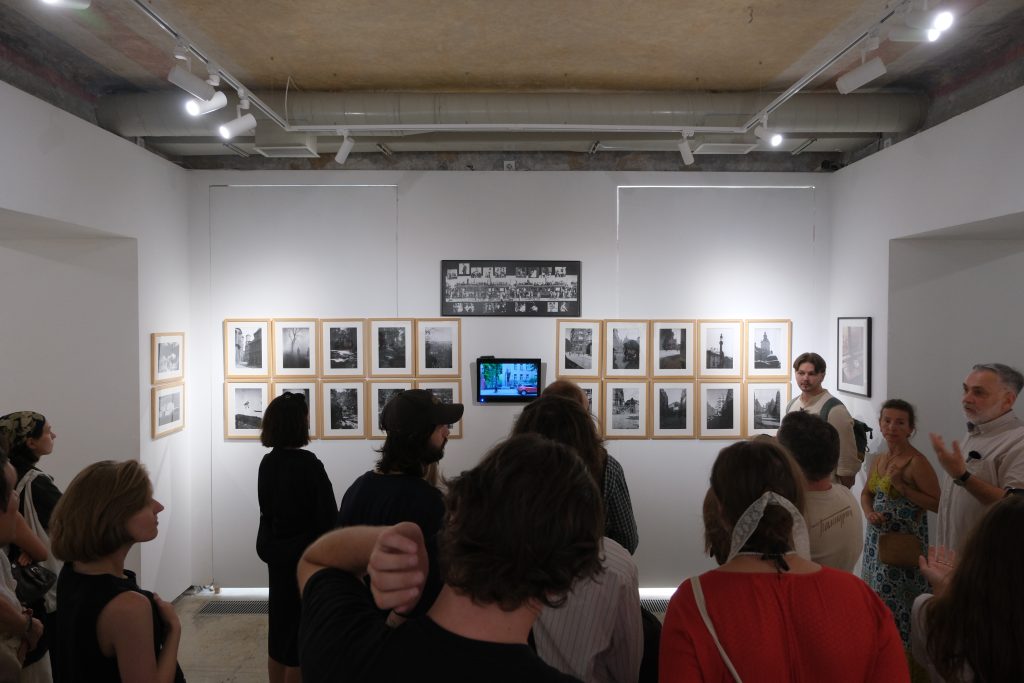Domowroty / ПОВЕРНЕННЯ / Homing. Włodzimierz Puchalski
27.7 – 1.12.2024
Lviv Municipal Art Center
Curated by Andrij Bojarov
HOW TO FIND THE WAY HOME?
The exhibition Domowroty / ПОВЕРНЕННЯ / Homing. Włodzimierz Puchalski invites you to explore the world of photography and experiments by Włodzimierz Puchalski, a charismatic artist and naturalist whose life was divided by the war into before and after. Themes of home and loss, war and return, are central to the exhibition, which will be the focus of talks held in the gallery near a park where birds can be heard singing.
On August 31, 1939, Włodzimierz Puchalski wrote in his pocket calendar, which he had kept every year since he was eleven: "Some storks are returning to their nests and calling." The next day, on September 1, in larger letters, he wrote: "WAR."
Lviv (Lwów, לגרעבמעל, Lemberg) is one of those cities that changed dramatically after the Second World War. It took time for the memories of those who lived and loved in the city before the tragic events of 1939 to resurface. But could they physically, psychologically, or mentally return to their city after the war? When and how did they return? What does "return" even mean?
Włodzimierz Puchalski was born in 1909 in Velyki Mosty near Lviv. Encouraged by his family to observe and photograph nature, he developed his artistic impulse and technical skill at the Institute of Photography at the Lviv Polytechnic. Puchalski built his artistic identity based on the guidance of Henryk Mikolasz and found inspiration in the work of Witold Romer.
An early, though less obvious, magnum opus of the artist was his long-term observations of white stork migrations in the village of Butyny near Velyki Mosty in the 1930s. The critical question researchers asked at the time was why birds, symbols of "attachment to home," returned from the wild to the same areas they left. The phenomenon of bird migration and homing has not yet found a definitive scientific explanation. Today it is perhaps even more complex, and the metaphor of "returning" to one's home has acquired a new meaning.
Despite his special attention to nature, Puchalski did not avoid urban landscapes in his work. His photographs of Lviv in the 1930s are markedly different from the standard views of the historic city that were mostly of interest to his contemporaries. Puchalski's view of the city stands out for its fresh perception, inherent in the contemplation of wildlife.
All of Puchalski's works and archival materials come from the collection of the Royal Museum in Niepołomice. This exhibition, curated by Andrij Bojarov, first opened at the International Center of Culture in Krakow in 2022, where it was named Exhibition of the Year in a Radio Kraków plebiscite. The accompanying publication was awarded the main prize at the Wroclaw Book Fair Pero Fredry that year. In 2023, the exhibition was displayed at the Photo Gallery of the City of Rzeszów.
In the summer of 2024, the curator will present it to Lviv residents and guests in cooperation with the Lviv Municipal Art Center and the Center for Urban History. The exhibition will be accompanied by a public program inviting broader conversations around the themes of photography and memory, home and return, and city and nature.
The exhibition will be open daily from 10:00 to 21:00 at the Municipal Art Center (time changes are possible due to the situation in the power grid). Admission is free.
The following team collaborated on the exhibition in Lviv:
- Andrij Bojarov, Curator of the exhibition
- Viktoria Panas, Coordinator and facilitator of the exhibition project, Center for Urban History
- Lyana Mytsko, Exhibition project coordinator, director of the Municipal Art Center
- Andrij Bojarov, Natalia Dziubenko, Adam Sobota, authors of the texts
- Roman Mamitov, technical support, Municipal Art Center
- Ihor Tymoshchuk, graphic design
- Yelyzaveta Bobrova, communication support, Center for Urban History
- Yaryna Paniv, financial support, Center for Urban History
- Roman Mamitov, Olena Pohonchenkova, Seira, administration, Municipal Art Center
- Volodymyr Voznyi, photography, Municipal Art Center
The accompanying program for the exhibition is being prepared by the teams from the Center for Urban History and the Municipal Art Center:
- Viltoria Panas: Curator of the program
- Andrij Bojarov, Vladyslava Moskalets, Sofia Dyak, Mariana Mazurak: Consultants
- Sofia Andrusyshyn, Roman Mamitov, Lyana Mytsko: Organizational support
- Yelyzaveta Bobrova, Marta Sloboda: Communication support
- Yaryna Paniv, Tetiana Figel: Financial support
Organizers of the exhibition in Lviv:
- Andrij Bojarov, independent curator
- Center for Urban History
- Lviv Municipal Art Center
Partners of the exhibition in Lviv:
- Consulate General of the Republic of Poland in Lviv
- Department of Culture of the Lviv City Council
Information support of the exhibition in Lviv:
- FotoTapeta
- Suspilne Culture
We thank the Museum in Niepołomice, the International Center of Culture in Krakow, Tatra National Park, Photo Gallery of the City of Rzeszów, Mrs. Barbara Romer and Dyląg Gallery for their cooperation.
Credits
Cover Image: Włodzimierz Puchalski
Gallery: Volodymyr Voznyi


















